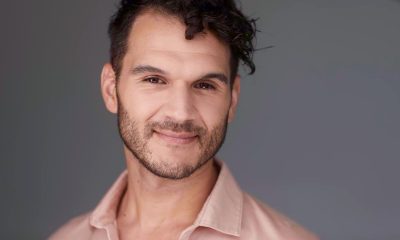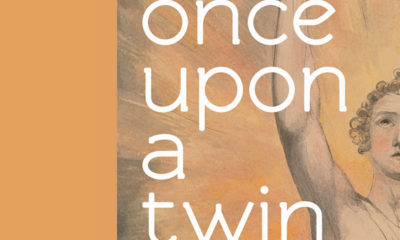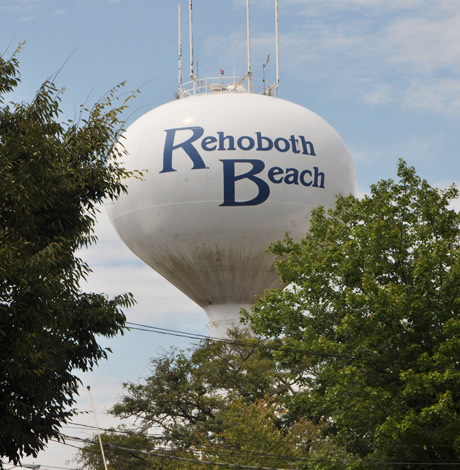Living
Abraham Lincoln: A life in the closet?
By Mark Segal
National Gay History Project
Abraham Lincoln (1809-65) may likely be the most studied and researched of the United States presidents. The first reference to him possibly being “homosexual” came from notable Lincoln expert Carl Sandburg in his 1926 biography, “Abraham Lincoln: The War Years.” In describing the early relationship between Lincoln and his close friend, Joshua Fry Speed, Sandburg wrote “a streak of lavender, and spots soft as May violets.” This line got historians talking about an issue from which many had previously shied away. Still, the biography was written in the early 20th century, a time when such topics were only discussed in whispers. But by including the line, Sandburg felt the relationship deserved acknowledgement. It wasn’t until 2005 when the first book was published on Lincoln’s relationships with men, C.A. Tripp’s “The Intimate World of Abraham Lincoln.”
Detractors of Lincoln’s possible homosexuality, such as historian David Herbert Donald, often say there is no new evidence on Lincoln. Yet historians continue to draw fresh conclusions from Lincoln’s letters. Those who attempt to refute Lincoln’s possible “homosexua

Abraham Lincoln as a young man. (Public domain photo by the Library of Congress, via Wikimedia Commons)
Yet history, like everything else, is open to interpretation and influenced by new findings. Bias also motivated the retelling of historical events. The best example of bias in American history is the story of Thomas Jefferson and his slave/concubine Sally Hemings, which was not accepted as a truthful account until 1998 — and only after DNA proof. African-American citizens — not historians — led the effort to give Hemings her rightful place in history. Likewise with Lincoln, most historians have referred to isolated facts rather than the pattern of events in his life to tell his personal story. Will history once again prove historians wrong?
The Poem
I will tell you a Joke about Jewel and Mary
It is neither a Joke nor a Story
For Rubin and Charles has married two girls
But Billy has married a boy
The girlies he had tried on every Side
But none could he get to agree
All was in vain he went home again
And since that is married to Natty
So Billy and Natty agreed very well
And mama’s well pleased at the match
The egg it is laid but Natty’s afraid
The Shell is So Soft that it never will hatch
But Betsy she said you Cursed bald head
My Suitor you never Can be
Beside your low crotch proclaims you a botch
And that never Can answer for me
This poem, about a boy marrying a boy, is thought to be the first reference to gay marriage in U.S. history. A 20-year-old man in rural Indiana wrote it 182 years ago. That young man was Abraham Lincoln. Most historians agree Lincoln wrote the poem as a joke or rebuttal to the lack of an invitation to a friend’s wedding, but how a backwoodsman conceives a boy-marries-boy poem in 1829 remains a question.
The poem was included in the first major biography of Lincoln, written by his law partner, William Herndon. Revisionists omitted it in subsequent editions. It didn’t reappear in Herndon’s edition until the 1940s.
Billy Greene
In 1830, when Lincoln’s family moved to Coles County, Ill., he headed out on his own. At age 22, he settled in New Salem, Ill., where he met Billy Greene — and, as Greene told Herndon, the two “shared a narrow bed. When one turned over the other had to do likewise.” Greene was so close to Lincoln at that time that he could describe Lincoln’s physique. However, Lincoln was poor at the time and it was not unusual for men in poverty to share a bed.
Joshua Fry Speed
In 1837, Lincoln moved to Springfield, Ill., to practice law and enter politics. That’s where he met the two men who would be his greatest friends throughout his life. One, Joshua Fry Speed, became his bed partner for a while; the other was law partner Herndon. Beyond the revelation that Lincoln and Speed had an intimate friendship, little has been written about how diligently Speed worked for Lincoln’s legal and political career. Speed’s name popped up in many of Lincoln’s legal filings and on the Illinois Whig Party’s central committee. The two were almost inseparable. Most Lincoln historians agree this relationship was the strongest and most intimate of the president’s life. What they don’t agree on is why they slept in the same bed together for four years when they had the space and means to sleep separately, as was expected of men their age. They were no longer young and poor. And this was a house with ample room, unlike the hotels that accommodated Lincoln and his team on the road; then, it was common to sleep two or more in a bed.
By 1840, both Lincoln and Speed — now 31 and 26— were considered well past the marrying age. Both bachelors reportedly were hesitant to tie the knot, but it was a de-facto requirement to have a wife if you wanted to move in political circles — or at least create the perception of interest in marriage. Both Speed and Lincoln dreaded this “requirement,” as evidenced by Lincoln’s letters. Speed takes the marriage plunge first and moves back to Kentucky, leaving Lincoln. At this precise time, Lincoln suffered a mental breakdown. Historians have been all over the map as to what caused the breakdown, but it was so intense that friends, including Herndon, worried he would take his own life. Lincoln only recovered after Speed invited him to visit him and his new wife in Kentucky.
Lincoln’s most emotional and intimate writings were contained in his letters to Speed. From the time they lived together until shortly after Speed married and moved to Kentucky, Lincoln always signed his letters “forever yours” or “yours forever.”
Lincoln wrote to Speed shortly before the latter’s Feb. 15, 1842 wedding: “When this shall reach you, you will have been Fanny’s husband several days. You know my desire to befriend you is everlasting — that I will never cease, while I know how to do any thing.
“But you will always hereafter, be on ground that I have never occupied, and consequently, if advice were needed, I might advise wrong.
“ … I am now fully convinced, that you love her as ardently as you are capable of loving … If you went through the ceremony calmly, or even with sufficient composure not to excite alarm in any present, you are safe, beyond question, and in two or three months, to say the most, will be the happiest of men.
“I hope with tolerable confidence, that this letter is a plaster for a place that is no longer sore. God grant it may be so.
“I would desire you to give my particular respects to Fanny, but perhaps you will not wish her to know you have received this, lest she should desire to see it. Make her write me an answer to my last letter to her at any rate. I would set great value upon another letter from her.
“P.S. I have been quite a man ever since you left.”
The two exchanged letters regularly and, in October 1842, Lincoln observed the newlywed Speed was “happier now than you were the day you married her.” He continued: “Are you now, in feeling as well as judgment, glad you are married as you are? From any body but me, this would be an impudent question not to be tolerated; but I know you will pardon it in me. Please answer it quickly as I feel impatient to know.”
The urgency in his letter is palpable: Lincoln married Mary Todd on Nov. 4, 1842, despite that he broke off their engagement two years earlier.
Even after the Civil War broke out and Speed lived in Kentucky — a border state, Lincoln and Speed continued to write. On numerous occasions, Speed visited Lincoln at the White House; he even spent a night with Lincoln in the president’s cottage at the Soldier’s Home, 3 miles northwest of the White House.
Throughout Lincoln’s political career, he urged Speed to accept a political appointment that would bring him to live in Washington, D.C. When that failed, he appointed Speed’s brother, James, U.S. attorney general in 1864.
Elmer Ellsworth
After Speed and Lincoln’s marriages, there were no traces of other men in Lincoln’s life until Elmer Ellsworth in 1860. According to “The Abraham Lincoln Blog,” in 1859, Ellsworth formed the Chicago Zouaves, a precision military drill team based on the famous Zouave soldiers of the French Army based in northern Africa.
The Chicago Zouaves, led by Ellsworth, toured the northern states in the months before the Civil War, with the so-called regiment performing acrobatic moves, marching and weapons displays. The regiment impressed the crowds — despite the fact that they’d never seen military action.
Lincoln met Ellsworth through these displays and the two became friends. Lincoln invited Ellsworth, who had been a law clerk in Chicago, to move to Springfield to study law. Ellsworth became devoted to Lincoln and adored by the entire Lincoln family. One author wrote that it seemed Lincoln had a “schoolboy crush” on the much-younger Ellsworth. He first worked in Lincoln’s law practice, then moved on to his political career and eventual campaign for president. Once elected, Lincoln asked Ellsworth to accompany his family to Washington.
At the beginning of the Civil War, Ellsworth asked Lincoln to assist in obtaining a position for him in the Union Army. In a letter dated April 15, 1861, Lincoln wrote: “I have been, and still am anxious for you to have the best position in the military which can be given you.”
When a call for soldiers went out, Ellsworth headed to New York and rallied 1,000 men, then returned to Washington, D.C. When Virginia voted to secede on May 23, 1861, a hotel owner in Alexandria, Va., across the Potomac River, raised a Confederate flag — visible from Lincoln’s office. Early the next morning, Ellsworth and his men crossed the river and occupied the telegraph office to cut off communications. Seeing that the hotel was next door, Ellsworth entered it and took down the flag, then was fatally shot by the hotel’s proprietor. Ellsworth would be the first Union soldier killed in the war.
After hearing of the tragedy, Lincoln wept openly and went with Mrs. Lincoln to view the soldier’s body. Lincoln arranged for Ellsworth to lay in state in the White House, followed by a funeral. The president was inconsolable for days.
Lincoln wrote condolences to Ellsworth’s parents: “My acquaintance with him began less than two years ago; yet through the latter half of the intervening period, it was as intimate as the disparity of our ages, and my engrossing engagements, would permit … What was conclusive of his good heart, he never forgot his parents.”
As with Speed and his family, Lincoln appointed Ellsworth family members to positions in the government.
David Derickson
In 1862, Lincoln met Capt. David Derickson, who served as his bodyguard, providing protection for the president when he commuted from the White House to his cottage at the Soldier’s Home. Lincoln spent about a quarter of his presidency at the cottage, which allowed him some escape from D.C.’s summers and from public interruptions at the White House.
Lincoln and his bodyguard became close, and historians Tripp and David Herbert Donald noted two recorded mentions that Lincoln and Derickson slept in the same bed: Derickson’s superior, Lt. Col. Thomas Chamberlain, and Tish Fox, the wife of Assistant Navy Secretary Gustavus Fox, both wrote about it. Tish wrote in her diary that Derickson was devoted to Lincoln and “when Mrs. Lincoln was away, they slept together.”
But there were more than just two eyewitnesses to this relationship. After the war, Chamberlain published an account of the regiment called “History of the 150th Regiment of Pennsylvania Volunteers, Second Regiment, Bucktail Brigade.” Before it was published, many members of the company reviewed the manuscript and no one objected to the following:
“The president was also not an infrequent visitor in the late afternoon hours, and endeared himself to his guards by his genial, kind ways. He was not long in placing the officers in his two companies at their ease in his presence, and Capts. Derickson and Crozier were shortly on a footing of such marked friendship with him that they were often summoned to dinner or breakfast at the presidential board. Capt. Derickson, in particular, advanced so far in the president’s confidence and esteem that in Mrs. Lincoln’s absence he frequently spent the night at his cottage, sleeping in the same bed with him, and — it is said — making use of his excellency’s nightshirt! Thus began an intimacy which continued unbroken until the following spring, when Capt. Derickson was appointed provost marshall of the 19th Pennsylvania District, with headquarters in Meadville.”
The Bucktails witnessed the relationship between the president and his bodyguard, which was public enough that they knew Derickson kept him company when Mrs. Lincoln traveled, and wore his nightshirt. Historical interpretations aside, why would the president, then in his 50s, sleep with his bodyguard?
Lincoln and women
Lincoln’s lack of interest in women was frequently documented as awkward. Most historians agree there are only three women with whom Lincoln was close: his stepmother, Sarah Bush Johnston Lincoln, who raised him with affection; Ann Rutledge, who he was romantically linked to but not engaged; and Todd. He also courted Mary Owens for a time in 1836, but the relationship ended on mutual agreement. If Lincoln was a closeted gay man, he still could have loved and adored Todd, for the same reasons many closeted men love their wives: She brought him a sense of being loved and the family he craved. While Todd was always described as high-strung, she reportedly took a turn for the worse — many historians have labeled her as insane — during their marriage. The Lincolns endured many tragedies — three of their four children did not survive to adulthood — which could have caused her decline, but it’s also possible that she stumbled upon her husband’s same-sex affections.
Detractors
The most outspoken and respected of detractors is historian and Lincoln biographer David Herbert Donald, arguably the most notable Lincoln observer since Sandburg. In his attempts to refute Lincoln’s possible homosexuality, Donald claims in his book “Lincoln’s Men” (2004) that while Speed and Lincoln slept together for four years in the same bed, they both were romancing women during two of those years. But the fact that he courted women doesn’t rule out the possibility that Lincoln may have preferred men. Donald also noted that no contemporaries of the two, including Herndon, claimed to have witnessed Speed and Lincoln having intimate relations. But Donald ignored eyewitness accounts and misinterpreted other witnesses who hinted at it, such as the president’s own secretaries. The historian also brushed aside the emotion contained in the letters between Lincoln and Speed, in their own handwriting. Donald pointed out it was common for 19th-century young men to have emotional relationships and share a bed. But Speed and Lincoln weren’t considered “young” when they met.
Doris Kearns Goodwin, in an interview on C-SPAN about her 2006 Lincoln biography “Team of Rivals: The Political Genius of Abraham Lincoln,” said, “Homosexuals didn’t exist before the word was coined in 1868 … ” She most likely meant the term didn’t exist, but this clearly demonstrates a lack of sensitivity by non-gay historians. Goodwin has to be familiar with Lincoln contemporary Walt Whitman. While the words “homosexual” and “gay” were not coined at that point, Whitman now is considered to have been gay.
Younger historians and Lincoln scholars seem to be more sensitive to the subject than Donald or Kerns were. For example, Jean H. Baker, a former student of Donald, conceded in her acclaimed 1987 book, “Mary Todd Lincoln: A Biography,” that Lincoln’s distraction from his wife was likely due to more than just his all-consuming work. Baker said, in a New York Times interview, “I previously thought [Lincoln] was detached because he was thinking great things about court cases … now I see there is another explanation.”
Conclusions
Taken individually, accounts of Lincoln with other men may not offer enough proof that he was gay. But the pattern reveals a man who, in his sexual prime, slept exclusively with another man for four years — two of those years (according to Donald) without romancing someone of the opposite sex; who wrote a poem about a boy marrying a boy; and who, as president, slept with his bodyguard.
From historical records, one can conclude that Lincoln enjoyed sleeping with men. He did so when it was acceptable in youth and poverty, and also when he was older and successful. While it is documented that Lincoln slept with several men, there is only one confirmed woman who shared his bed — Todd. (Most Lincoln historians dispute an account that he was involved with a female prostitute.) Of the men, we don’t know how many reciprocated with emotion. To find one same-sex soul mate in the culture of the 1800s seems a miracle; Lincoln may have sought others when Speed went on to have the life that was expected of men of the time. In that period, only one man in 300 did not marry. And Speed was apparently the love of his life. Lincoln resisted marriage as long as he could, only marrying after Speed was well-entrenched in his own marriage — a phase that coincided with Lincoln’s “mental distress.”
Mark Segal is founder and publisher of Philadelphia Gay News, the country’s oldest LGBT newsweekly. Sometimes called the Dean of the Gay Press, Segal is an award-winning columnist and is fascinated by history.
Real Estate
The rise of virtual home tours
Adapting to changing consumer preferences in spring real estate

In today’s dynamic real estate market, the spring season brings not only blooming flowers but also a surge of activity as buyers and sellers alike prepare to make their moves. However, in recent years, there’s been a notable shift in how consumers prefer to explore potential homes: the rise of virtual tours.
For the LGBTQ community, these virtual experiences offer more than just convenience; they provide accessibility, safety, and inclusivity in the home buying process.
Gone are the days of spending weekends driving from one open house to another – unless that’s your thing of course, only to find that the property doesn’t quite match expectations. With virtual tours, you can explore every corner of a home from the comfort of your own space – find something interesting? Schedule a showing with any LGBTQ Realtor at GayRealEstate.com.
This is particularly significant for LGBTQ individuals, who may face unique challenges or concerns when attending in-person showings. Whether it’s the ability to discreetly view properties without fear of discrimination or the convenience of touring homes located in LGBTQ-friendly neighborhoods across the country, virtual tours offer a sense of empowerment and control in the home buying process.
Moreover, virtual tours cater to the diverse needs of the LGBTQ community. For couples or families with busy schedules or those living in different cities or states, these digital walkthroughs provide a convenient way to view properties together without the need for extensive travel. Additionally, for individuals who may be exploring their gender identity or transitioning, virtual tours offer a low-pressure environment to explore potential living spaces without the added stress of in-person interactions.
At GayRealEstate.com, we understand the importance of adapting to changing consumer preferences and leveraging technology to better serve our community. That’s why our agents offer an extensive selection of virtual tours for LGBTQ individuals and allies alike – visit our website, choose an agent and within minutes you’ll have access to the Multiple Listing Service (MLS) via their website.
From cozy condominiums in bustling urban centers to sprawling estates in picturesque suburbs, virtual tours showcase a wide range of properties tailored to diverse tastes and lifestyles.
In addition to virtual tours, GayRealEstate.com provides comprehensive resources and support to guide LGBTQ buyers and sellers through every step of the real estate journey. Our network of LGBTQ-friendly agents is committed to providing personalized service, advocacy, and representation to ensure that all individuals feel respected, valued, and empowered throughout the process. Plus, we are happy to provide a free relocation kit to any city in the USA or Canada if you are a home buyer.
As we embrace the spring season and all the opportunities it brings in the real estate market, let’s also celebrate the power of virtual tours to revolutionize the way we find and experience our future homes. Whether you’re searching for your first apartment, forever home, or investment property, GayRealEstate.com is here to help you navigate the exciting world of real estate with confidence, pride, and inclusivity.
Jeff Hammerberg is founding CEO of Hammerberg & Associates, Inc. Reach him at [email protected].
Advice
Should I divorce my husband for the hot new guy in our building?
Debating whether to leave or stay after the sex goes cold

Dear Michael,
I’ve been with my husband for 10 years and the sex is pretty much gone. It stopped being exciting a long time ago and pretty much the only time we ever do it is with the occasional third.
A really hot guy moved into our building about a year ago. We would see each other sometimes in the elevator or at our building’s gym and we started talking and really hit it off. Mark is 15 years younger than I but we seem to have a lot in common. We started hooking up and the sex is amazing.
I haven’t told my husband because it’s breaking our rule about no repeats. I have to say that the secrecy is hot. It’s kind of a thrill to take the elevator upstairs when I say I’m going on an errand. But it’s more than that. I have a connection with Mark that is far more amazing than what I have ever felt with my husband. Not just the sex. We just enjoy being together, talking about anything and everything.
My husband went to visit his family last weekend and I spent the whole time with Mark. Since then I can’t stop thinking that I want to leave my husband and be with Mark.
Part of me thinks this is a crazy mid-life crisis. I mean, this kid’s in a totally different place in life. But we have mind-blowing sex and a fantastic connection. I’d like your thoughts on how to proceed.
Michael replies:
You’ve got a lot to consider.
First: Sex with a long-term partner changes over time. It tends to be less about erotic heat and more about the connection with a person whom you love. In other words, it’s being with the person you’re with that makes the sex meaningful and even great. Having a good sexual relationship with a long-term partner comes far more from a heart connection than from a crotch attachment.
Second: You seem ready to throw your relationship under the bus pretty quickly, without addressing other problems in the relationship besides sex. When you are sneaking around, lying, and rule-breaking , I don’t see how you can look your husband in the eye; and if you can’t look him in the eye, you certainly can’t have even a half-way decent relationship.
Yet another point to consider: Affairs pretty much always seem more exciting than marriage. The partner is new, which almost automatically makes the sex hotter; the secrecy is a thrill; and you don’t have to deal with paying the rent, house chores, and all the petty annoyances of living up-close with someone day-in, day-out.
You are bringing lots of energy to your affair, and everything about it is exciting. You are bringing no energy — at least no positive energy — to your marriage. You get what you put into a relationship.
Divorce is not something that should be entered into lightly. Be aware that if you leave your husband for Mark, you will no doubt find over time that the sex becomes less exciting and that the connection is not always fantastic. No surprise, 75 percent of marriages that begin with affair partners end in divorce. While I don’t think statistics predict what will happen to any particular couple, believing that you will have a significantly better relationship with your affair partner than you did with your husband sets you up for likely disappointment.
Many gay men focus on “hot sex” as the big draw, pursuing a lot of sex with a lot of men, and/or pursuing an ongoing series of relationships that last until the sex cools. If that’s what you want, that’s fine. But it’s a different path from pursuing a close and loving long-term relationship, which involves knowing someone well and having him know you well; collaborating on getting through the hard stuff life throws at us; finding ways to make peace with disappointment; and consistently striving to be someone worth being married to.
How to proceed? While you are the only person who should make that decision, I would suggest that whatever your choice, keep in mind that marriage can be more than what you’ve made of it, so far.
Michael Radkowsky, Psy.D. is a licensed psychologist who works with couples and individuals in D.C. He can be found online at michaelradkowsky.com. All identifying information has been changed for reasons of confidentiality. Have a question? Send it to [email protected].
Autos
Sport haulers: Jeep Grand Cherokee, Mercedes GLE-Class
Updated cabins, adept handling, and more
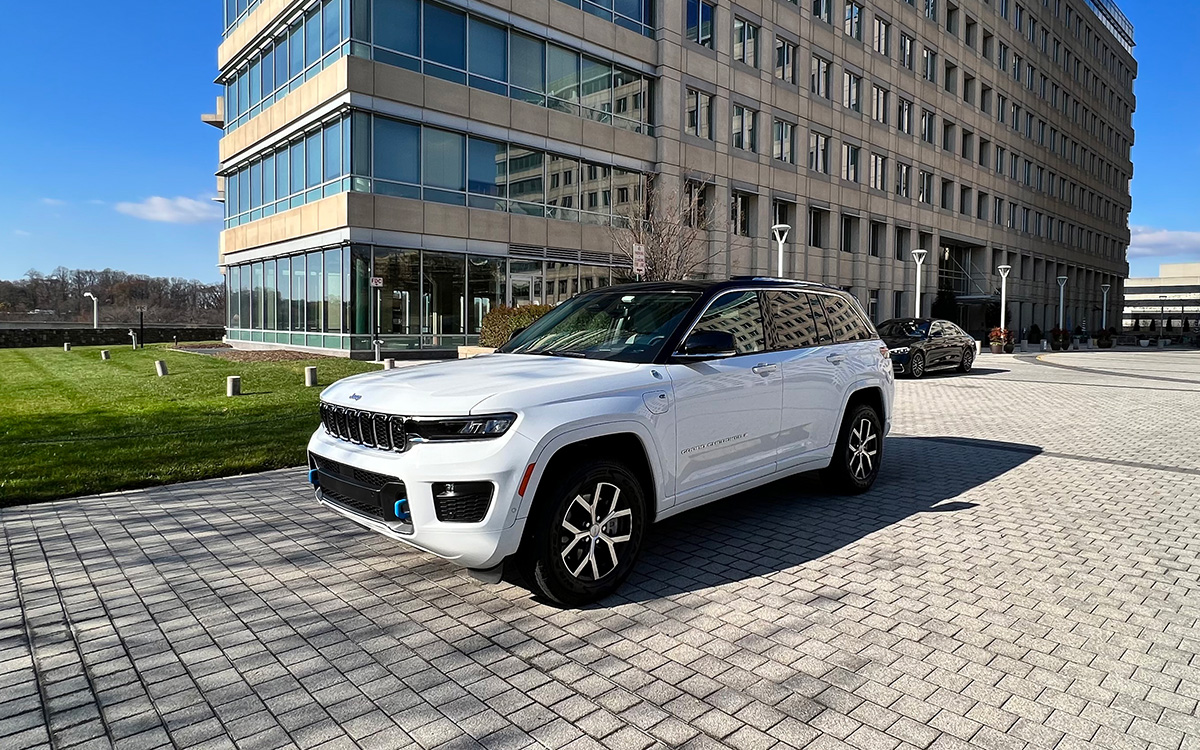
Now that March Madness and the Masters are over, it’s time for, well, everything else. For my husband and me, this means water sports, as in kayaks and rowing sculls, which is why we trekked to the Potomac for the George Washington Invitational regatta last weekend.
Alas, high winds splashed cold water on the event, canceling much of it. But there was still plenty of spirited camaraderie to rival “The Boys in the Boat.”
And I was reminded of my time years ago as a rower with D.C. Strokes, ferrying teammates to races up and down the East Coast. Back then my ride was a dated, rather cramped four-door sedan.
If only we could have paddled around in a sporty SUV like the two reviewed here. Now that would have been some smooth sailing (wink-wink).
JEEP GRAND CHEROKEE
$40,000
MPG: 19 city/26 highway
0 to 60 mph: 7.5 seconds
Maximum cargo room: 37.7 cu. ft.
PROS: Updated cabin, adept handling, strong towing
CONS: So-so gas mileage, no third row, pricey trim levels
IN A NUTSHELL: Rough, tough and buff. It’s doesn’t get much more butch than a Jeep. This year’s Grand Cherokee is no exception, with rugged looks, expert off-road capability and better-than-average towing capacity of 6,200 pounds.
There are a dizzying number of trim levels—more than a dozen—starting with the barebones base-model Laredo at an affordable $40,000. The lineup tops out with the Summit Reserve 4xe PHEV, which is almost twice the price at $76,000 and one of various plug-in hybrid versions available. Those plug-in hybrids can drive up to 25 miles on all-electric power before the four-cylinder gas engine kicks in. Otherwise, you can choose from a standard V6 or V8. Gas mileage on all trim levels is basically the same as the competition.
Where the Grand Cherokee really shines is in the handling. More refined than a Wrangler but less lavish than a Land Rover, this Jeep maneuvers just as well on city streets and highways as it does on bumpier terrain.
I tested the mid-range and mid-priced Overland, which comes standard with four-wheel drive and large 20-inch wheels. It also boasts a slew of niceties, such as quilted upholstery, panoramic sunroof and high-tech digital displays. These include a 10.25-inch infotainment touchscreen and rear-seat entertainment system.
The nine-speaker Alpine stereo, designed specifically for the Grand Cherokee, is pleasing. But I really wanted to hear the boffo 19-speaker McIntosh surround-sound system that Jeep also offers. Sigh, it’s only available on the premium Summit trim level.
MERCEDES GLE-CLASS
$64,000
MPG: 20 city/25 highway
0 to 60 mph: 6.6 seconds
Maximum cargo room: 33.3 cu. ft.
PROS: Lush interior, silky-smooth suspension, speedy
CONS: Some confusing electronics, tight third row, many competitors
IN A NUTSHELL: For a more high-class hauler, there’s the Mercedes GLE-Class. This midsize SUV is similar in size to the Jeep Grand Cherokee. But instead of seating five passengers, the GLE can carry up to seven. Sure, legroom in the optional third row may be tight for taller travelers, but it’s perfect for a cocky cockswain or two.
Six trim levels, ranging from the base-model GLE 350 to two high-performance AMG models. For eco-conscious buyers, the GLE 450e plug-in hybrid arrived earlier this year and can run on battery power alone for almost 60 miles.
My test car was the top-of-the-line AMG 63 S 4Matic, a head-turner in every way. Priced at a whopping $127,000, this GLE looks best in glossy black with the Night Package, which includes tasteful jet-black exterior accents and matte-black wheels. To complete the Darth Vader effect, there’s a deep, menacing exhaust rumble that’s downright threatening.
You expect such a ride to be wicked fast, and it is: 0 to 60 mph in a blistering 3.7 seconds. Yet the carbon ceramic brakes with their devil-red calipers are equally impressive in slowing things down quickly.
Inside, each GLE comes with two large digital displays on the elegantly sculpted dashboard. My favorite feature is the “Hey Mercedes” digital assistant, which responds to voice commands such as opening or closing the sunroof, operating the infotainment system or activating the climate controls.
It’s hard to find sport seats that are more comfortable, especially with the heavenly massage function (though those massage controls could be a bit more user-friendly.) For AMG models, the seats come with red-contrasting stitching and red seatbelts—a nod to the devilish demeanor under the hood.
Considering all the SUVs available in showrooms, few make quite the splash of a GLE.
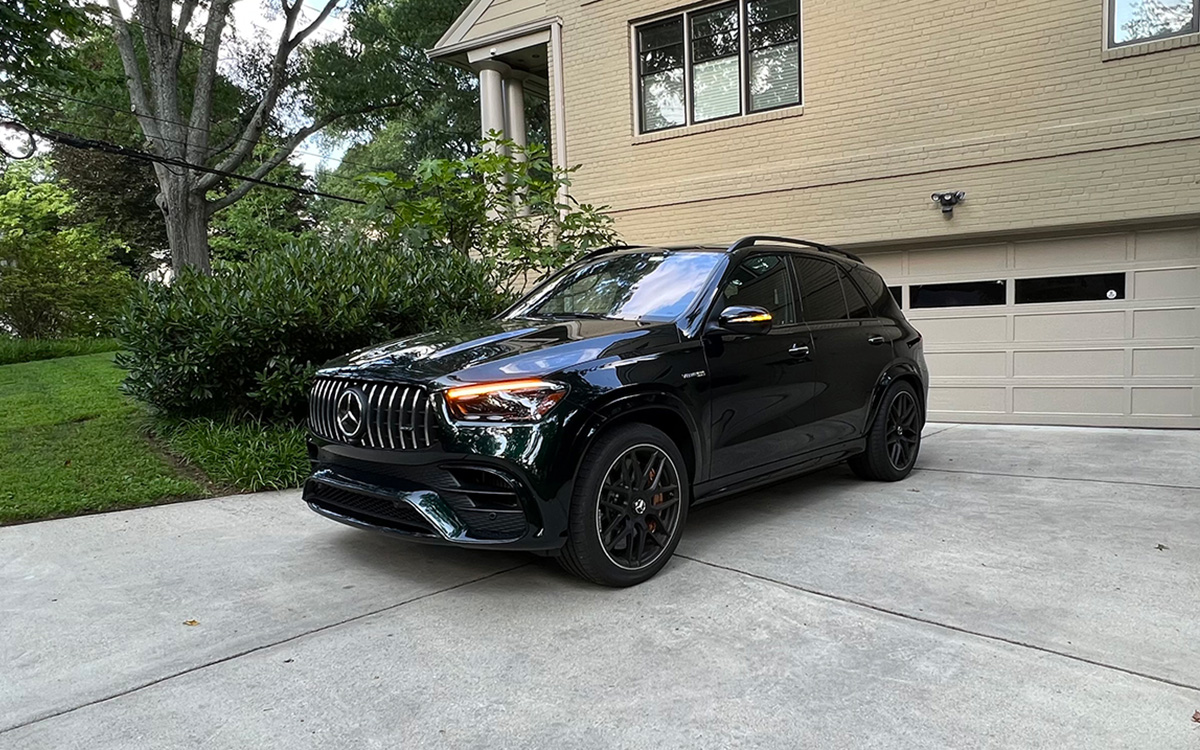
-

 State Department4 days ago
State Department4 days agoState Department releases annual human rights report
-

 South America2 days ago
South America2 days agoArgentina government dismisses transgender public sector employees
-

 District of Columbia2 days ago
District of Columbia2 days agoCatching up with the asexuals and aromantics of D.C.
-

 Politics4 days ago
Politics4 days agoSmithsonian staff concerned about future of LGBTQ programming amid GOP scrutiny

